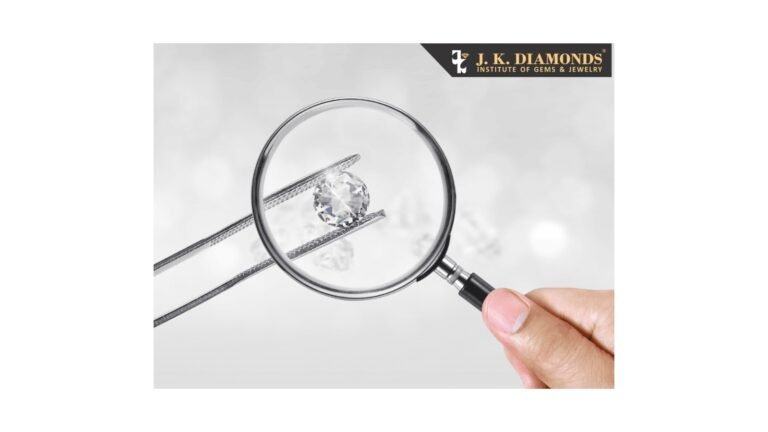In the realm of diamonds, a sparkling debate has emerged between tradition and innovation, between the timeless allure of natural diamonds and the burgeoning popularity of lab-grown alternatives. This discussion isn’t just about aesthetics; it delves into economics, ethics, and cultural shifts. Join us as we explore the fascinating world of lab-grown diamonds, their comparison with natural diamonds, and their potential impact on the jewelry industry.
Introduction to Lab-Grown Diamonds
Lab-grown diamonds, also known as synthetic or cultured diamonds, are created in controlled laboratory environments using advanced technological processes that mimic the natural diamond formation process. These diamonds share the same chemical composition, crystal structure, and physical properties as natural diamonds, making them virtually indistinguishable to the naked eye and even to trained gemologists.

Comparison of Lab-Grown and Natural Diamonds
When comparing lab-grown and natural diamonds, several factors come into play:
Quality and Characteristics: Both lab-grown and natural diamonds come in a variety of qualities, with factors such as color, clarity, cut, and carat weight determining their value. Lab-grown diamonds often have fewer inclusions and may exhibit more consistent quality compared to natural diamonds.
Environmental and Ethical Considerations: Lab-grown diamonds are often touted as a more environmentally and ethically conscious choice compared to natural diamonds, which are often associated with environmental degradation and ethical concerns related to mining practices.
The is a prevailing myth is that lab-grown diamonds (LGDs) are inherently eco-friendly. It is true that LGD technology emits gasses harmful to the environment, and the energy sources powering LGD growing machines, particularly in regions like India and China, often rely on coal. This raises legitimate concerns about the environmental impact of LGD production, especially considering the carbon footprint associated with these processes.
However, it’s essential to recognize that the narrative surrounding LGDs and environmental friendliness may get better in the near future. With ongoing advancements in technology and a growing focus on sustainability, there is potential to mitigate the environmental drawbacks associated with LGD production. For example, efforts are underway to develop cleaner energy sources to power LGD manufacturing facilities and to implement more efficient gas capture and recycling systems to minimize emissions. Hence it is not wrong to say that the entire marketing campaign that LGDs are good for the environment is largely untrue, in the present times.
The Forever Appeal of Natural Diamonds
Natural diamonds have long held a special place in human culture and history. They symbolize enduring love, commitment, and luxury. From ancient civilizations to modern-day engagements, natural diamonds have been cherished for their rarity, beauty, and symbolism.
The Trendy Allure of Lab-Grown Diamonds
In recent years, lab-grown diamonds have surged in popularity, particularly among younger generations. Their appeal lies in their ethical sourcing as no illegal mining takes place for Lab-Grown Diamonds (LGDs). It has the potential to be sustainable but there’s still a long way to go since its not completely there yet. Moreover, lab-grown diamonds have gained traction in celebrity endorsements and fashion trends, further fueling their demand.
Economic Factors and Market Trends
The pricing dynamics of lab-grown versus natural diamonds have been shifting. While natural diamonds still command higher prices due to their perceived rarity, lab-grown diamonds offer a more affordable alternative without compromising on quality. As technology advances and production scales up, the price gap between the two may be expected to narrow further.
But looking at the facts it can be said that LGDs will become more main stream, since they will continue to become more affordable in the short and medium term. Hence their consumption and volumes will increase leading to further increase in the demand of Lab-Grown Diamonds (LGDs).
Whereas, natural diamonds as a market will become more niche, and command a steady rise in prices. Thereby the demand will be more from the consumers who are above the upper middle income category, hence making sure that a micro market for natural diamonds will be created. This will be differentiating factor between the mass market and the luxury market.
Investment Perspective
The question of whether lab-grown diamonds will hold their value remains a topic of debate. While natural diamonds have a long-standing track record as a store of value, the increasing acceptance and demand for lab-grown diamonds could potentially impact their resale value in the future.
As a matter of fact, Lab-Grown Diamonds (LGDs) are more likely to further reduce in prices till it stabilizes at a minimum level. However, the demand will only further increase as LGDs become more mainstream. Hence, from the long term perspective, LGDs are definitely not an investment option for sure.
Natural diamonds, on the other hand, when bought at an wholesale rate can be considered as an investment option. However, this investment in natural diamonds should be viewed more as a luxury purchase than an actual investment. Since, natural diamonds will however, not lose it’s value as much as LGDs.
Consumer Perspectives: Preferences and Choices
Individuals’ choices when purchasing diamonds are influenced by a myriad of factors, including personal values, budget constraints, and cultural trends. While some may prioritize the prestige of natural diamonds, others may opt for the affordability and ethical considerations of lab-grown diamonds.
Innovations in Diamond Technology
Ongoing research and developments in lab-grown diamond technology are driving advancements in production efficiency and quality control. These innovations have the potential to disrupt the traditional diamond market further and reshape consumer preferences.
Conclusion: Navigating the Forever vs. Trendy Dilemma
In conclusion, the choice between natural and lab-grown diamonds ultimately boils down to individual values and priorities. While natural diamonds carry a timeless appeal and cultural significance, lab-grown diamonds offer a modern, affordable alternative. As consumers navigate this dilemma, it’s essential to weigh the pros and cons carefully and make informed choices that align with their beliefs. Both natural diamonds as well as lab grown diamonds are forever.

Learn about diamonds with 100% practical training
Looking to delve deeper into the world of diamonds? Enroll in the Diamonds course at J K Diamonds Institute of Gems & Jewelry. With over three decades of experience, J K Diamonds Institute offers 100% practical training, providing students with comprehensive knowledge and hands-on skills in diamonds. Don’t miss this opportunity to embark on a rewarding journey in the fascinating realm of diamonds! In conclusion, as the diamond industry continues to evolve, so too do our perceptions and preferences. Whether you lean towards the eternal allure of natural diamonds or the trendy appeal of lab-grown alternatives, the choice is ultimately yours. Make it wisely, and may your diamonds shine bright, reflecting not just beauty, but also your values and aspirations.




